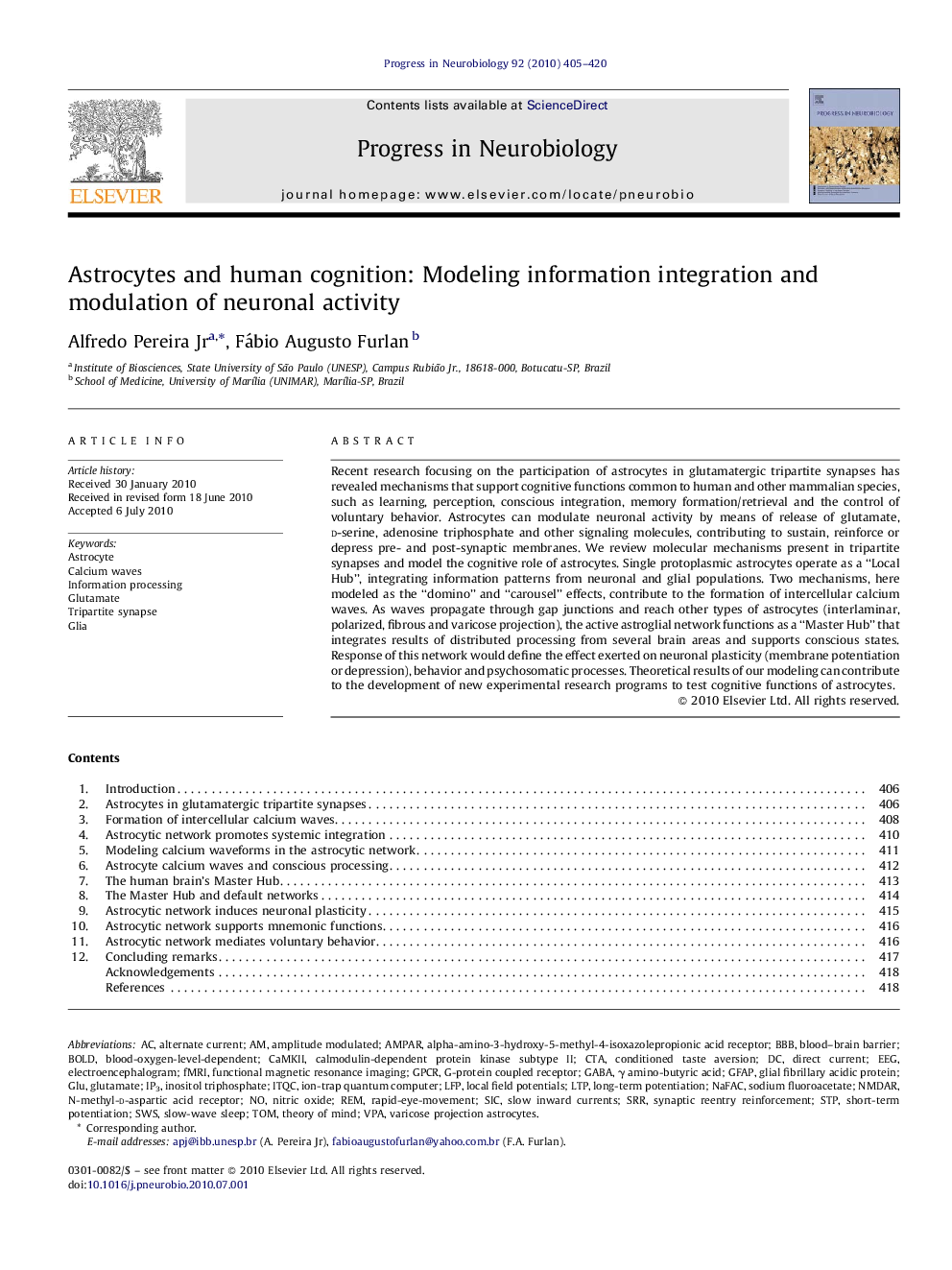| Article ID | Journal | Published Year | Pages | File Type |
|---|---|---|---|---|
| 4353554 | Progress in Neurobiology | 2010 | 16 Pages |
Recent research focusing on the participation of astrocytes in glutamatergic tripartite synapses has revealed mechanisms that support cognitive functions common to human and other mammalian species, such as learning, perception, conscious integration, memory formation/retrieval and the control of voluntary behavior. Astrocytes can modulate neuronal activity by means of release of glutamate, d-serine, adenosine triphosphate and other signaling molecules, contributing to sustain, reinforce or depress pre- and post-synaptic membranes. We review molecular mechanisms present in tripartite synapses and model the cognitive role of astrocytes. Single protoplasmic astrocytes operate as a “Local Hub”, integrating information patterns from neuronal and glial populations. Two mechanisms, here modeled as the “domino” and “carousel” effects, contribute to the formation of intercellular calcium waves. As waves propagate through gap junctions and reach other types of astrocytes (interlaminar, polarized, fibrous and varicose projection), the active astroglial network functions as a “Master Hub” that integrates results of distributed processing from several brain areas and supports conscious states. Response of this network would define the effect exerted on neuronal plasticity (membrane potentiation or depression), behavior and psychosomatic processes. Theoretical results of our modeling can contribute to the development of new experimental research programs to test cognitive functions of astrocytes.
Research highlights▶ Model of astrocyte cognitive functions. ▶ Astrocyte modulation of synaptic plasticity. ▶ Model of information integration supporting conscious processes. ▶ Interplay of astrocytic with default networks. ▶ Role of neuronal synchrony for neuron–astrocyte interactions.
